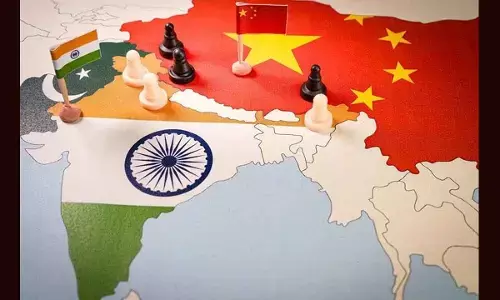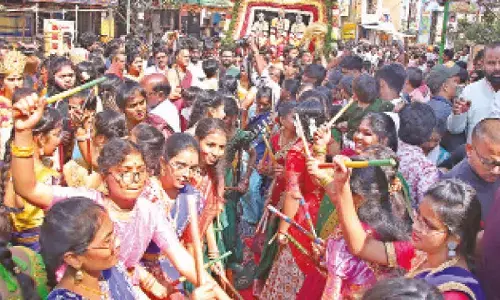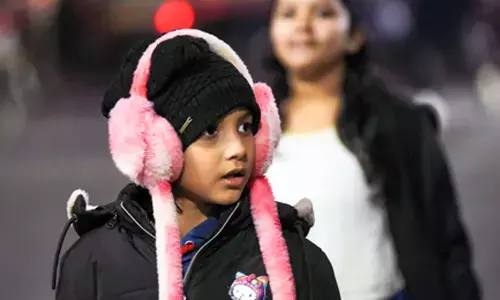Election special: India talks, does politics, on TV

Election special: India talks, does politics, on TV. In a Greek democracy the leaders could address everyone assembled in the main square.
.jpg) "In a Greek democracy the leaders could address everyone assembled in the main square. We cannot get that intimacy now, but television does enable leaders speak to everyone in his home. So, to start with, television can make everyone much better informed."
"In a Greek democracy the leaders could address everyone assembled in the main square. We cannot get that intimacy now, but television does enable leaders speak to everyone in his home. So, to start with, television can make everyone much better informed."Jiri Pelikan, director general of Czechoslovak TV and chairman of parliament's foreign affairs commission, said that in early days of the 1968 Prague Spring, which applies to our own country and time too in this summer of elections even when social media is the flavour of the season.
Over the last decade or so, television has changed the way politics is played and experienced in this country. It has, in fact, become a power base across the country. Every large party in the country now has a channel, or a station owned or co-owned by the party leader's followers or relatives. The recent comments by National Congress Party and Aam Admi Party leaders Sharad Pawar and Arvind Kejriwal respectively about certain channels indulging in "paid news" amplify in a way the salience the medium has acquired in Indian politics, despite all the malcontents and shortcomings, and the increasing spread of cell phones.
This is partly because of the medium's distinct advantages and the kind of political culture it operates in. Television transcends the language barrier and makes virtually irrelevant the difference between literates and illiterates. The unlettered can see, hear and understand, even if they cannot read. And with the growing spread of its access and viewing, its importance as a platform to mount a national campaign on an otherwise dispersed electorate for political mobilization has increased.
The 2011 census data shows that a total of 47.2 percent of households in India own a television and there has been a 16 percent rise in the number of households watching television. The figures could have gone up by now with increased rural electrification and growing income population.
Television bestows acceptability on a politician. Today who is seen frequently on television is considered a leader. According to one estimate, more than 100 million in India watch news television every day across languages and geographies. Thus a leader of a local or regional party with increasing visibility acquires a national profile.
We have seen how television made Arvind Kejriwal, the Aam Admi Party (AAP) leader, what he is.
In the Indian system of voluntary voting, politicians need to reach out to potential voters. Television visibility helps them expand their constituencies. "With a film, you make a choice to go and see it, but with TV it just comes into the living room, it's a great means of reaching people," said an actor-turned-politician.
There are a staggering 140 TV channels beaming news and current affairs into homes. Hundred others do some kind of current affairs programming. Pollsters say television has allowed women to access information in a way they could not earlier and do not depend on their menfolk while making choices. In the 2013 Delhi assembly elections, more women supported AAP than the two national parties, BJP and the Congress.
Television is thus a critical political resource, particularly during election time. It gives the viewer the experience of "being there". When a viewer sees a person, an event, he or she bears witness to these. As its content is organized and presented in time rather than space, the medium provides immediacy and comes much closer to what Walter Lippmann called "a picture of reality on which the citizens can act".
Communication theorists and social scientists have been saying that television in many cases makes people to respond immediately and directly to issues. The 2002 Gujarat riots was a case in point. The presence of television cameras showing the violence aroused an immediate national response. Similarly, without television, the shock effect of the Lucknow sari stampede during the 2004 elections would have been dissipated.
The rise in importance of television, however, has much to do with the context, the kind of democratic politics and political culture within which it has been operating, working itself out. Since the beginning of the 1970s, campaigning has been on a plebiscitary mode organised around populist slogans and the media. And with the meaning of democracy reduced to just holding elections and the value attached to winning them, the personality profile of the leader has occupied the space once held by the party.
Indira Gandhi was the first Indian politician to take advantage of this. It was during her regime that television coverage (access, not exactly viewing) in the country increased. And in the following pre-satellite years, Rajiv Gandhi had the unlimited access to the majority of population. And as they said, a young and articulate Rajiv Gandhi , with little help from the emerging political consulting industry, "came through" on television and was dubbed as India's "first TV prime minister".
What has facilitated the increased use of television further is the changing political geography of India, an expanding middle class facilitating the integration of the electorate. According to one estimate, the burgeoning pan-Indian, urban middle class constitutes a sizeable section of the electorate and cuts across the regional cultures. In occupation terms, this class is at the core of the "information society" that India is fast becoming. It is mostly aspirational and, as cultural theorists tell us, puts a premium on quality of life and accountability in governance. In such a context, television is seen to have a homogenizing influence to create a "national mood" or shape popular perception.
However, another process has been at work for quite some time now, what Alvin and Heidi Toffler say "demassification". With technology fast advancing and becoming cheaper and new possibilities of communication opening up, the media system is getting increasingly decentralized and the audience highly segmented. In such an environment, uniformity of opinion and leadership choice is harder to achieve. The deflation of the "India Shining" campaign and the "Vajpayee factor" in 2004 had a message for parties, media planners and media managers to heed.
Next Story
















